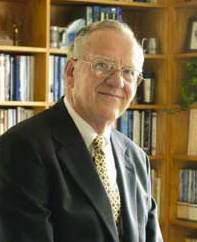
Yandle was the subject of a recent interview on environmental economics in the Region Focus magazine by the Richmond Federal Reserve Bank, part of which appears below. For more PERC Q&As, see the Q&A archives.
RF: How did you become interested in the economics of the environment?
Yandle: What some people refer to as the “externality revolution” was occurring in economics when I was a doctoral student in the late 1960s. In addition to that, there was the revolution that was formed by the rise of public choice as an analytical device, primarily associated with Gordon Tullock and James Buchanan’s 1962 book, The Calculus of Consent. Both were associated with a move from normative to positive economics and empirically-based studies. I wrote my dissertation on externalities in housing and the rise of what were then called slums and the programs that were addressing them, urban renewal. So I began writing on property rights and external effects, and that led naturally into questions of water quality, air quality, pollution, and so forth.
My direct link into questions of the environment as we think of it narrowly –water, air — was a colleague I became associated with at Clemson by the name of Hugh Macaulay. He was writing on, as he put it, “dirty water.” So when I joined that faculty, there was a senior faculty member who was working on this. I thought, my work transfers directly. I just have to change the names on the axes from “housing” to “water,” then I’ve got my model.
RF: In your writings about environmental economics, you’ve described a “systems approach” and a “process approach” to environmental policy issues. What do you mean by these terms?
Yandle: A systems approach is where the “brightest and best” get together and look at a problem and come up with what they believe to be the best solution. They describe the system that can be installed that will lead to a solution of the problem and so it tends to be top-down.
In a process approach, you identify goals and outcomes, develop some rules of the game, and then let the process take hold, holding accountability with respect to outcome. You don’t tell people how to do things; you say this is the outcome that must be achieved, or it’s going to be costly for you.
RF: You have been a proponent of the process approach. But aren’t there success stories that the systems approach has enjoyed?
Yandle: There are success stories in both camps. The process approach is by far the oldest because common law is a process approach where there are rules of property, rules of liability, rules with respect to pollution that have been around for centuries, so that one cannot impose costs on his neighbor without your neighbor’s permission, or your neighbor has a cause of action against you. At common law, people downstream hold property rights to water quality and people upstream cannot destroy that with impunity. Basically what protected air and water quality in the United States up until the late 1960s was the process approach based on common law, with a lot of state and local ordinances and statutes supplementing it. So there are wonderful success stories there. That is, somehow we all survived until the 1970s without having a systems approach imposed from the top for the environment in a consistent way.
There are transaction-cost problems and enforcement-cost problems that lead to situations where people will understandably develop a systems approach. Generally, when you have crises, systems approaches tend to take over — that is, we move to hierarchies, just as we are seeing now with Japan and nuclear power.
There are some wonderful success stories: EPA is now promoting process with respect to river basin management approaches for water quality and we’ve got some pretty interesting success stories going on there. They are, I would say, hampered inasmuch as they are promoting it within the context of technology-based, systems-approach standards based on inputs, and that’s because of the statutes under which they operate. The statute says you will define “best available control technology” and require it of all users of these particular streams. We have gotten to the point now where the EPA is identifying maximum loads that can be imposed on a stream; that’s an outcome. Then EPA says, OK, members of this watershed community, tell us how you would like to achieve that goal. That’s a process.
RF: You mentioned transaction costs. How much of an obstacle are transaction costs to environmental protection under the process approach?



